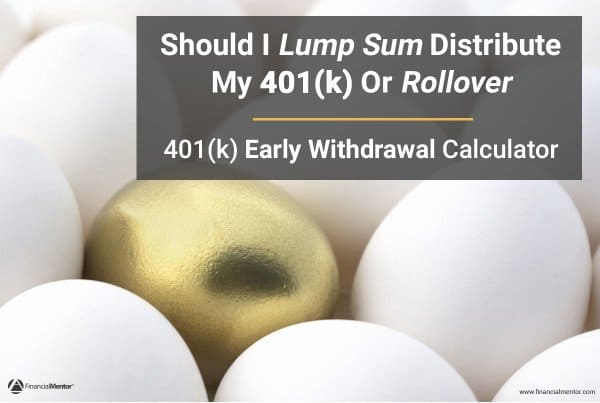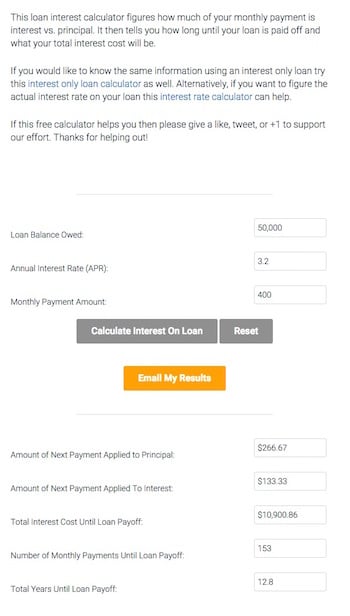Instead Of Looking At The “Rules,” Look At The Investment Strategy Used
Key Ideas
- Learn how to factor in market valuations and conditions when saving for retirement.
- Why buy and hold isn't the end-all-be-all strategy it's made out to be.
- The three avenues you can take to safeguard your retirement income.
How much can you withdraw from retirement savings each year without jeopardizing your financial security?
Conversely, how much money do you need for retirement so you can afford your current level of spending?
These are interesting questions that Larry presented in a recent blog comment that I will address below…
Specifically, Larry asked, “I have a question regarding retirement withdrawal rates in a long term bear market. The standard thinking is that a retiree can safely withdraw 4% of their portfolio each year. However, common sense tells me that if you retired with a high allocation in stocks and the P/E ratio was over the historical mean of about 15 at the time, your chances of using a 4% withdrawal rate successfully go down substantially during a long term bear market. Do all the studies on safe withdrawal rates take into account high market valuations? Do they even look at P/E ratios? Will the 4% rule hold up in a long term bear market? Thoughts?”
All I can say, Larry, is you are a man after my own heart. You’re questioning authority and not accepting the status quo commonly passed off as investment wisdom.
I like your independent thinking and agree wholeheartedly with your concerns. Let's look at this issue more closely…
Get This Article Sent to Your Inbox as a PDF…
Before explaining the solution to this question, let me provide a little background information about withdrawal rates so everyone is on the same page.
The 4% withdrawal rule is mathematically the same thing as the “rule of 25.” It’s an oversimplified, but useful guideline stating you need roughly 25 times your first year's spending to have enough money to retire. That’s mathematically the same thing as spending 4% of your assets annually.
This rule has been stress-tested using a variety of assumptions and Monte Carlo theory, and it’s surprisingly robust; however, it’s not perfect.
It provides a high confidence interval under most simulations using U.S. data, but that doesn't mean it can’t fail.
Wade Pfau tested the 4% Rule using the same portfolio allocations on international data and it failed 100% of the time. Shocking, but true.
In short, it's a simple rule of thumb designed to provide a quick shortcut for people who don't want to think too deeply about the subject.
It’s a reasonable guideline that more experienced readers will question and choose to adjust based on market valuations and conditions during retirement.
For example, a more robust rule to be used when market valuations are higher is spending 3% of your retirement nest egg, otherwise known as the rule of 33.
It's similar to the rule of 25, but with a little higher threshold requiring 33 times your first year's spending. This is safer, but it's also more difficult to achieve.
Getting back to Larry's question, why would market valuations cause concern that you should increase your retirement savings or lower the percent you can spend annually?
Well, the way the math works is pretty straightforward.
Your expected investment return over a 15-20 year horizon (relevant for most retirees) for a diversified portfolio of stocks is inversely correlated to the market valuation at the beginning of the holding period.
That sounds like a mouthful, so let me explain.
Data provided by Ed Easterling of Crestmont Research analyzes 20 year average investment returns for the S&P 500 over the period 1919-2008, and ranks them into deciles from best to worst.
The lowest investment return decile showed an average starting P/E of 19, and an average annual investment return of 3.2% over the following 20 year period – pretty pathetic and certainly not sufficient to support a 4% withdrawal rate.
Conversely, the best performing decile showed an average starting P/E of just 10 with an average annual return of 13.4% over 20 years – clearly more than enough to support more than a 4% withdrawal rate.
In other words, the higher the market valuation at the beginning of the holding period, the lower the expected return from a diversified portfolio of stocks. The lower the market valuation, the higher the expected return.
(Readers who find this subject interesting would likely enjoy Ed Easterling's excellent and highly recommended book Unexpected Returns: Understanding Secular Stock Market Cycles.)
These statistics are extremely robust, and the research has been verified using different time periods and data sets by multiple researchers.
I cited Easterling's research just because it’s easily accessible, but other credible researchers have documented the same phenomenon. It’s well known and thoroughly proven.
There’s nothing theoretical or questionable here: your 15-20 expected investment returns on a passive, diversified stock portfolio are inversely correlated to the market valuation at the beginning of the holding period.
So, what do you do with this information? Well, it depends on the market valuations.
If valuations are favorable, you don't have to do anything – just enjoy the ride with a normal, passive investment portfolio.
However, as I write this post, market valuations remain unfavorable, painting a 15-20 year expected return on a diversified portfolio of stocks likely insufficient to support a 4% withdrawal rate safely.
Again, nobody has a crystal ball, but the statistics point to a margin of safety that’s thinner than most retirees would like. This assumes, of course, a passive buy and hold investment strategy.
However, you’re not a victim to market valuations: you can do something about it.
How To Improve Your Safe Withdrawal Rate In Retirement
For example, I personally apply a more active investment strategy for the very reasons cited in this article. I’m not willing to accept the unfavorable expected returns of a passive portfolio purchased during a period of excessive valuations and unfavorable trends.
Likewise, a retiree with a real estate portfolio would be looking at the numbers very differently depending on how his portfolio is structured. The rental income from his real estate could easily provide a yield in excess of 4%.
The point is the conventional investment wisdom about safe withdrawal rates is only applicable to a portfolio where the investment returns result from a passive buy and hold investment strategy using a traditional asset allocation of paper assets.
In other words, the concept of a safe withdrawal rate applies regardless of your investment strategy, but the 4% or 3% rule assumes your investment returns will be similar to a passive buy and hold investor with a conventional asset allocation. You don't have to accept that assumption: you can do something about it.
All this analysis begs another, possibly more important question: rather than start with the assumption of a buy and hold investment strategy for equities and ask how much spending the portfolio can support, I believe the more interesting question is, “What investment strategy can realistically support the spending level I require?”
In other words, many people make the mistake of assuming buy and hold is the only game in town. I disagree wholeheartedly.
I believe buy and hold is a special case investment strategy that should only be employed when valuations imply an acceptable risk to reward ratio.
It’s not the all-weather investment strategy that conventional wisdom claims.
There are many alternatives available, but that discussion won't be covered here because it’s beyond the scope of this already-too-long blog post.
In summary, this analysis of safe withdrawal rates from retirement savings in an environment of excessive market valuation and unfavorable trends should give you several avenues to pursue:
- You can reduce your monthly withdrawal rate from retirement savings to something less than 4% to balance the reduced investment return expectation.
- You can increase retirement savings while maintaining the same nominal withdrawal rate, thus reducing your withdrawal rate in percentage terms (i.e. increase savings from 25 times first year withdrawal rate to 33 times or more).
- You can change investment strategy from passive to some alternative offering a higher mathematical expectation or higher income that would support the higher withdrawal rate.
Each one of these avenues can point you in the direction of greater retirement security given current market valuations and trends.
Also, if you would like more help in understanding How Much Money You Need To Retire, please check out my book on the subject.
Finally, please share how this post affects your thinking about retirement planning strategy.
I look forward to hearing your comments below…
Invest Like Todd!
A better investment strategy than buy and hold - Makes more by risking less
Discover the scientific investment process Todd developed during his hedge fund days that he still uses to manage his own money today. It’s all simplified for you in this turn-key system that takes just 30 minutes per month.





















Thank you for your response. I’ve been thinking about this issue for several weeks now and agree 100% with your analysis.
I’m planning on writing a position paper on the subject to clarify my own thinking on the subject. I don’t think the mainstream investment industry fully grasps how much high/low valuations impact not only “safe” withdrawal rates but also long term investment returns.
As you know, the real profit on any investment is usually made when you buy not when you sell. The valuation level at time of purchase is a good indicator of the future investment return.
Dr. Shiller and others have shown that the P/E ratio impacts long term investment returns as well. High valuations above the historical norm at the time of purchase substantially reduce real returns down the road. Low valuations at the time of purchase, generally provide higher real returns in future years.
A simple way that I remember this concept: “When valuations are high, stocks generally die”. “When valuations are low, Stocks usually grow”. The P/E ratio is one of those mathematical expectation tools that can really help us see through the investment fog.
Thank you for your insights. God Bless.